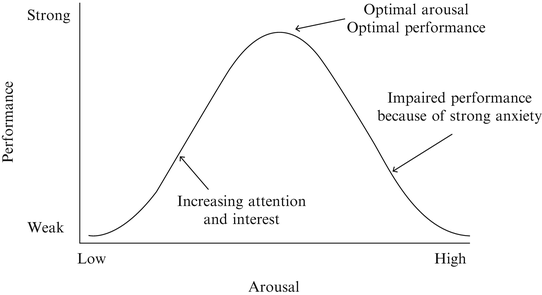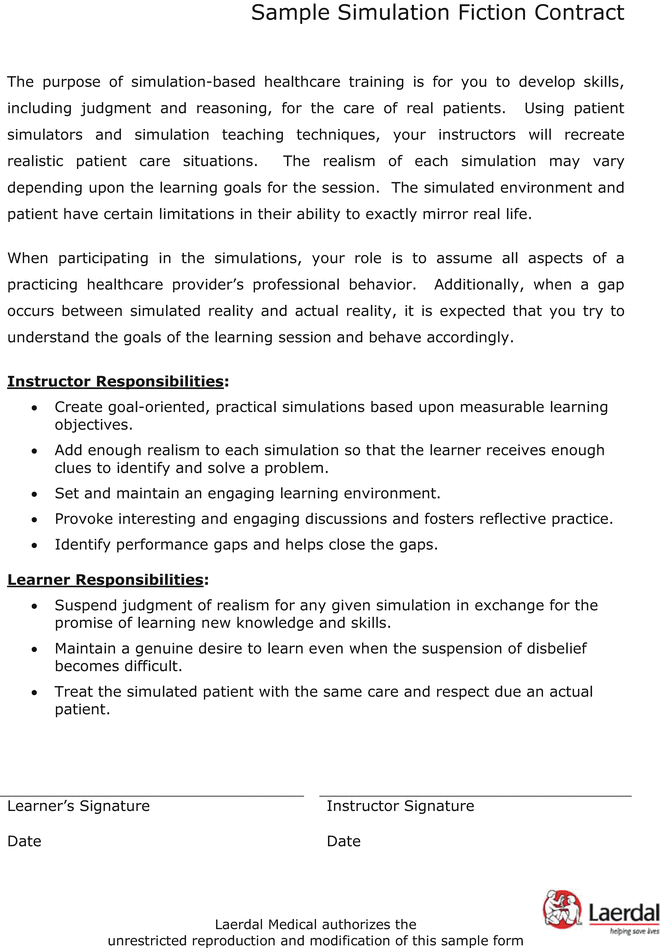Optimal simulation requires realistic settings (the area used to represent the clinical environment), able facilitators (those involved in the design and administration of the simulation), and skilled debriefers (experts in clinical content, adult education theory, and crisis resource management (CRM) – see Chap. 34). As above, “fidelity” refers to the extent to which the simulation resembles reality [9]. Traditionally, energy and technology were focused on mimicking the physical environment. However, we really need to optimize fidelity in three domains: physical; functional, and psychological [10].
Physical Fidelity
The physical fidelity is the degree to which simulation recreates the look, feel, sound, and smell of the real world. This includes both human and inanimate resources (i.e., both personnel and equipment). In trauma, this means ensuring that the simulated trauma bay contains the necessary equipment and that it is laid out in the usual fashion. Simulations can be performed in the actual clinical location or can employ photographic backdrops of your own trauma bay or operating theater, prerecorded patient sounds, and monitor noises.
Simulations have long included moulage makeup and fake blood. A recent addition is to cover the mannequin with a powder that only shows under ultraviolet light (to help teach universal precautions and hand washing). Recipe books also exist that provide instructions to make simulated vomit, melena, sputum, etc. [11]. This is more than gimmickry; after all, we learn best when we use all of our senses: sights, sounds, and smells.
Functional Fidelity
Functional fidelity refers to how realistically the simulator reacts to input from the operator. In other words, when an action is taken, does the simulator respond in a realistical manner? For example, following decompression of a tension pneumothorax, the oxygen saturation should improve rapidly. If not then participants may find the experience unbelievable.
Psychological Fidelity
Perhaps the most important part of fidelity is psychological. This represents the participant’s emotional response or “buy-in.” For example, does the simulation produce similar excitement, stress, or fear as real trauma, and do participants respond realistically? Maximizing psychological fidelity can be challenging, but the first step is to optimize physical and functional fidelity. Next, we can add complexity to the scenario (see below) or increase the environmental cues (e.g., phone ringing, audible warning on patient monitors) [10]. The extra effort helps learners to suspend disbelief. This increases engagement, which may improve knowledge acquisition and retention. A helpful analogy can be to liken simulation with drills used in sports training. Although there are no pylons on the playing field during games, the ability to navigate courses made of pylons can improve the players’ agility. In this way the game can be broken down into component parts and each skill honed ahead of game day.
Overcoming Obstacles to Simulation
Obstacles to simulation, such as “performance anxiety,” must be appreciated [12]. Educators should ensure that all participants feel safe to learn, to make mistakes, and to learn from mistakes. One strategy is for all simulation instructors to also become regular simulations instructees (i.e., do not expect others to do what you will not do yourself). In addition, when teaching juniors, we should ensure that we do not overwhelm or scare. When teaching seniors, we should ensure that we do not underwhelm or bore. Simulation should be individualized just like treatment [2].
In the early days of mannequin simulation, there was a tendency to tell learners that they could not make mistakes. These authors believe this is no longer justified. After all, our goal is to duplicate clinical practice where errors are commonplace [3]. The difference is that simulation allows us to learn from these mistakes in an environment that is safe for both patients and learners. We are less likely to remember cases that went right, compared to when a wrong decision, or missed cue, resulted in a poor outcome. Therefore, these are key educational opportunities. Seeing the effect of our mistakes helps shape future actions and provides an impetus to self-improvement. When designing simulations, we need to instill a sense of responsibility, just as we need to mirror the inescapable stress of trauma. With this in mind, it is critical that simulation scenarios not be designed solely to “stump” or expose the trainees. Careful design increases the likelihood that the required behavior or response is brought out by scenario. This is turn allows for a more deliberate debrief.
Appropriate criticism (from teachers to learners) has been showed to be just as important as achieving the hallowed “10,000 h” of practice [13]. If we are “too soft,” then there is a danger that we provide excuses that, in turn, prevent reflective learning. If we are “too hard” (or fail to accept the limitations of simulators), then we will destroy confidence or learners ignore instructors. A useful construct is the Yerkes-Dodson law [14] (Fig. 35.1). This inverted U-shaped curve compares performance (y-axis) and arousal (x-axis): too little arousal impairs learning and retention, as does too much stress or criticism [14, 15].


Fig. 35.1
Hebbian Yerkes-Dodson law: designing simulations that are neither too easy nor too hard. (Redrawn with permission from: Diamond DM, Campbell AM, Park CR, Halonen J, Zoladz PR. The Temporal Dynamics Model of Emotional Memory Processing: A Synthesis on the Neurobiological Basis of Stress-Induced Amnesia, Flashbulb and Traumatic Memories, and the Yerkes-Dodson Law. Neural Plasticity 2007: 33. doi:10.1155/2007/60803. PMID 17641736. Copyright © 2007 David M. Diamond et al.)
Simulation champions should be wary of giving the impression that those who teach traditionally, or were not trained using simulation, are “out-of-date.” Also, due to cost and time constraints, many hospitals only employ simulation sessions once or twice per annum. If the goal is for simulation to drive systemic change, then sessions should be regular [5]. The more that simulation becomes integrated into everyday hospital practice, the more that participants will see this as a normal, nonpunitive, activity.
Before embarking on simulation, both facilitators and learners can agree on a “fiction contract.” Originated by Dieckmann et al. [16], this establishes the terms of the simulated session. It outlines roles and responsibilities and can be verbal or written and informal or formal (Fig. 35.2). The contract states that facilitators make the scenario as realistic as possible. In return, participants will “suspend disbelief” and act as if it was a real clinical situation. It means that all agree that simulation has limitations, but all agree to maximize learning.


Fig. 35.2
Sample fiction contract. Reprinted with permission from Laerdal Medical
Simulation 201: Basics of Scenario Development
Whether designing a traditional curriculum or a simulation curriculum, many of the same lessons apply (Table 35.2). Firstly, learning objectives should be clearly stated and should use action verbs (“learners will do the following…”). Secondly, the work of Bloom is particularly instructive. Bloom described a taxonomy of educational objectives that includes three domains: cognitive (knowledge and recall), psychomotor/skills (thinking and doing), and attitudinal (behaviors and reactions) [1, 2].
Table 35.2
Steps of scenario design
• Identify baseline skills of the learner(s); identify clinical needs of the learner(s) |
• Tailor the simulation to match those needs |
• Include at least one new skill from each of Bloom’s educational domains |
• Tailor the simulation (more cognitive skills for juniors, more attitudinal for seniors) |
• Further tailor the simulation (low-level cognition for juniors, higher level for seniors) |
• Especially for mature learners, consider including: |
– Telephone simulation, handover simulation, blindfolded simulation |
• Allow repetition of the same scenario until mastery |
• Always leave time for structured debrief |
• Compare performance before and after (i.e., Ottawa Global Rating Scale) |
• Collect data; welcome candid feedback |
When designing simulations, we can ensure each scenario includes at least one learning point from each of Bloom’s domain. For example, in major hemorrhage, the factual learning point may be that we now employ massive transfusion protocols. The manual skills may be how to set up a level 1 infuser, and the behavior may be how to advocate for immediate surgery. This strategy can be readily applied to any critical incident (i.e., in head trauma: how to dose mannitol, how to perform hyperventilation, how to direct the trauma team). Just as a stool needs three legs in order to stand, this three-legged simulation approach (fact, skill, and behavior) sets simulation apart from traditional education.
Bloom’s work offers more regarding simulation design. For example, for senior learners we may focus more on the attitudinal domain. For junior learners, we may focus more on the cognitive domain. Depending upon how junior learners are, we can further subdivide the cognitive domain into six levels of increasing complexity. These include “facts” (can trainee repeat/write what they have learnt?), “understanding” (can trainees put the facts in their own words?), “application” (can trainees apply the facts to different cases?), “analysis” (can trainees locate relevant information?), “synthesis” (can trainees put it together/come up with a plan?), and “evaluation” (can trainees compare and evaluate different plans?) [1, 2].
Experience is a great teacher, and, as such, scenario development will likely improve over time. It is appropriate for educators to use their own clinical scenarios to get started. Moreover, you do not have to be an expert educator to design useful initial scenarios. Instead, you need modest emotional intelligence (i.e., what does the learner need?) and a commitment to ongoing improvement. Simulation is also about preparing people for practice, not reinforcing the superiority of the instructor. Too many scenarios have focused on atypical presentations or have been programmed to cause mannequin death (no matter what the candidate does). The focus should be on what the learner requires not what the teacher wants to teach.
Basic facts can be transmitted in the lecture hall and at the bedside, even in the coffee room. Alternatively, facts can also be taught through medical simulation, and retention may be better than via passive or didactic methods. However, simulators are expensive, not always portable, and frequently require operators. Therefore, mannequin simulators are usually best reserved for nonfact-based education (the so-called nontechnical skills). Instead, facts can be taught during a pre-simulation tabletop discussion or interactive lecture.
More recently, electronic learning systems are increasingly used. These facilitate scheduling, pre-learning, and pretesting. This maximizes simulation time and ensures participants are primed to get the most from finite simulation time. These online tools can include advanced graphics, video, and sound clips, making them at least the equal of traditional textbooks. In addition, online resources can include computer-simulated patients. These can contain varied responses (based on preprogrammed algorithms) triggered by the learner’s response. They can also include “nudges” based upon how far participants veer from the intended learning point.
For those learners new to simulation (and to crisis resource management (CRM) training), merely simulating in a team format provides opportunities to address leadership, communication, teamwork, problem-solving, and situational awareness. However, as the learners mature, the goals should be more deliberate. This can be done by preemptively highlighting at least one CRM-specific objective in the scenario design. For example, the learner will demonstrate situational awareness. In this case, the scenario would be designed with distractors such as incessant overhead pages, distressed family members, and distracting injuries. Alternatively, the learner will deal with conflict and leadership. In this case, a confederate can question the leader’s decision-making and try to create dissent. These CRM objectives are then addressed in the structured debrief.
A common error in design is to increase complexity to ensure that the trainees do not “solve” the problem too early. As complexity of the scenario increases, so does the potential for deviation from the expected course, as well as the potential for an overwhelming number of issues for debrief. Careful attention to the educational objective of the scenario is the first step to preventing this issue. At each phase of scenario construction, the writer should ensure that the elements direct learners toward the objective.

Full access? Get Clinical Tree






